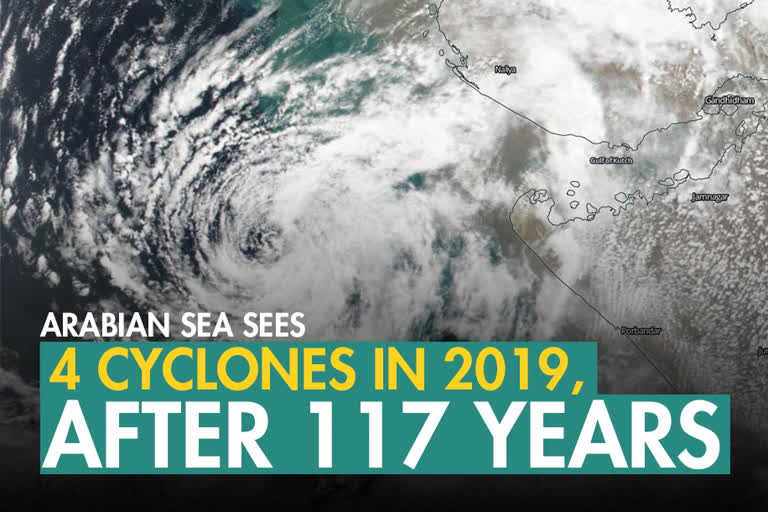New Delhi: The Arabian Sea saw the formation of four cyclones in 2019, a phenomenon recorded after 117 years, according to meteorologists. This year, the sea that touches the Indian subcontinent, West Asia and West Africa, has seen the formation of Vayu, Hikka, Kyarr and Maha cyclones.
The first one to develop into a cyclonic storm in the Arabian Sea was 'Vayu' that skirted the Gujarat coast in June, followed by Hikka in September. October saw the formation of two cyclones Kyarr, which intensified into a super cyclonic storm, and Maha. Both brought unseasonal rains to Karnataka, Maharashtra, and Gujarat resulting in damage to life and property.
Maha fizzled on Friday and has deintensified into a low-pressure area. "It is rare for the Arabian Sea to see the formation of four cyclones. Such development was last recorded in 1902," said Indian Meteorological Department Director-General Mrutyunjay Mohapatra.
Read: Cyclone 'Bulbul' to make landfall between WB and B'desh coasts
Mahesh Palawat, the vice president (meteorology and climate change) of private weather forecaster Skymet, also termed this as an "exception". Mohapatra, who specializes in predicting cyclones, said during 1891-2018, the maximum number of six cyclonic disturbances developed in 1998. Of these, three turned into cyclonic storms.
The formation of cyclonic storms in the Arabian Sea is normal but it is rare if it develops in October-November. Usually, the Bay of Bengal witnesses cyclonic storms during this period. Explaining the origins of the formation of cyclonic storms in the Bay of Bengal, Mohapatra said they are usually the remnants of the typhoons of North Pacific which fizzle out, travel down to the South China Sea and cross Vietnam and Thailand.
